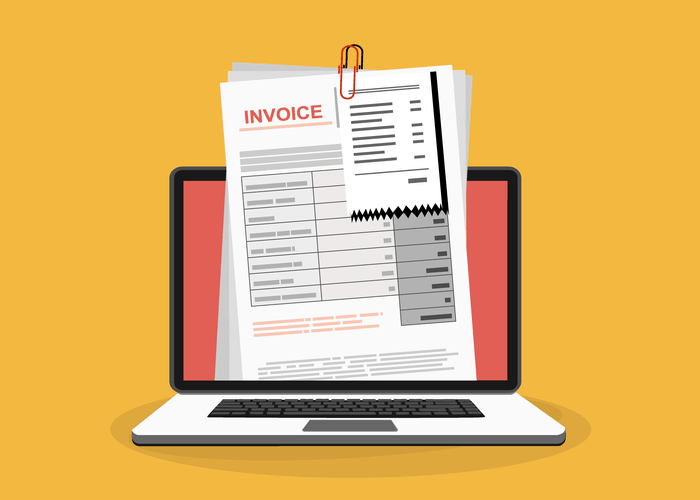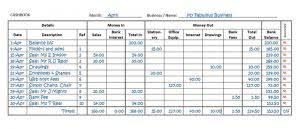Cash Conversion Cycle: What Is It and How Can You Improve It?

By using technology and focusing on productivity, transportation businesses can enhance cash flow, increase liquidity, and reinvest in growth opportunities. Businesses can enhance financial efficiency by implementing proactive collection strategies, such as offering discounts for Sales Forecasting early payments and improving communication with clients about overdue invoices. With less focus on inventory, companies in this sector can streamline their Days Sales Outstanding (DSO) to improve cash flow and reduce liquidity risk.
Automated Credit Scoring
- In 2023, the company had a CCC of 130—this is a decline between the ends of fiscal years 2022 and 2023.
- Therefore, the cash conversion cycle is a cycle where the company purchases inventory, sells the inventory on credit, and collects the accounts receivable and turns them into cash.
- Tracking a company’s CCC over multiple quarters will show if it is improving, maintaining, or worsening its operational efficiency.
- This happens when they collect payments from customers before paying their suppliers.
- It also enables the company to eliminate all its fixed asset investments in the producing region and related real estate.
ABC’s AP balance is even higher than its inventory balance at the end of both periods. The main delay in the cash conversion cycle is the time it takes to collect cash from customers after a credit sale. Evaluating your inventory management practices is essential for improving the Cash Conversion Cycle, particularly by reducing Days Inventory Outstanding (DIO) and enhancing overall operational efficiency. Implementing just-in-time inventory systems, improving demand forecasting, and developing effective inventory turnover strategies can significantly impact your cash flow. Improving your Cash Conversion Cycle cash conversion cycle (CCC) necessitates a strategic approach that includes enhancing inventory management practices, refining accounts receivable processes, and optimizing payables management.

Calculate Days Inventory Outstanding

Therefore, the cash conversion cycle is a cycle where the company purchases inventory, sells the inventory on credit, and collects the accounts receivable and turns them into cash. As businesses strive for cost efficiency and operational streamlining, the time taken to convert an investment in inventory into sales reduces, thereby shortening the cash conversion cycle. Moreover, responsive and agile supply chain strategies have helped companies manage and predict demand better, and expedite the conversion of sales into cash. The advent of digital transformation is substantially reshaping the financial landscape. A fast-paced move towards automation and AI driven decision making can impact the cash conversion cycle (CCC) considerably.
- However, due care must be taken not to overstrain these relationships, as this can lead to cash flow issues for suppliers.
- This means that the cycle measures how fast a company sells its inventory and collects payments from customers, and how long it takes to pay suppliers.
- However, what constitutes a “good” cycle varies by industry and company objectives.
- You can find these values from your financial statements or use online calculators to estimate them.
- As a result, the days inventory outstanding (DIO) portion of the CCC can be quite significant.
- Accounts payable days refer to the average number of days it takes a company to pay its suppliers, which is calculated as the average accounts payable balance divided by the cost of sales per day.
Examples of the Cash Conversion Cycle (CCC)

This means that the cycle measures how fast a company sells its inventory and collects payments from customers, and how long it takes to pay suppliers. This means that on average, it takes the company 15 days to convert its investments in inventory and accounts receivable into cash, after taking into account the time it takes to pay its suppliers. The cash conversion cycle measures the amount of time it takes for a business to convert its cash investments in raw materials or inventory into cash from product sales. It is an important measure of the business cycle that shows how long a company will have to wait from its initial investment in production material to actually receiving cash. Part of the cash conversion cycle includes the time delay in collecting accounts receivables.


This occurs when they collect payments before fulfilling orders, which provides a recording transactions significant liquidity advantage. This metric reflects the company’s payment of its own bills or accounts payable (AP). If this can be maximized, the company can hold onto cash longer, maximizing its investment potential. A negative cash conversion cycle indicates that the company is receiving payments on accounts receivable sooner than it is paying its suppliers. Next, Days Sales Outstanding (DSO) measures the time taken to collect customer payments. Businesses offering credit typically have longer DSOs, which can strain cash flow.


Bir yanıt yazın